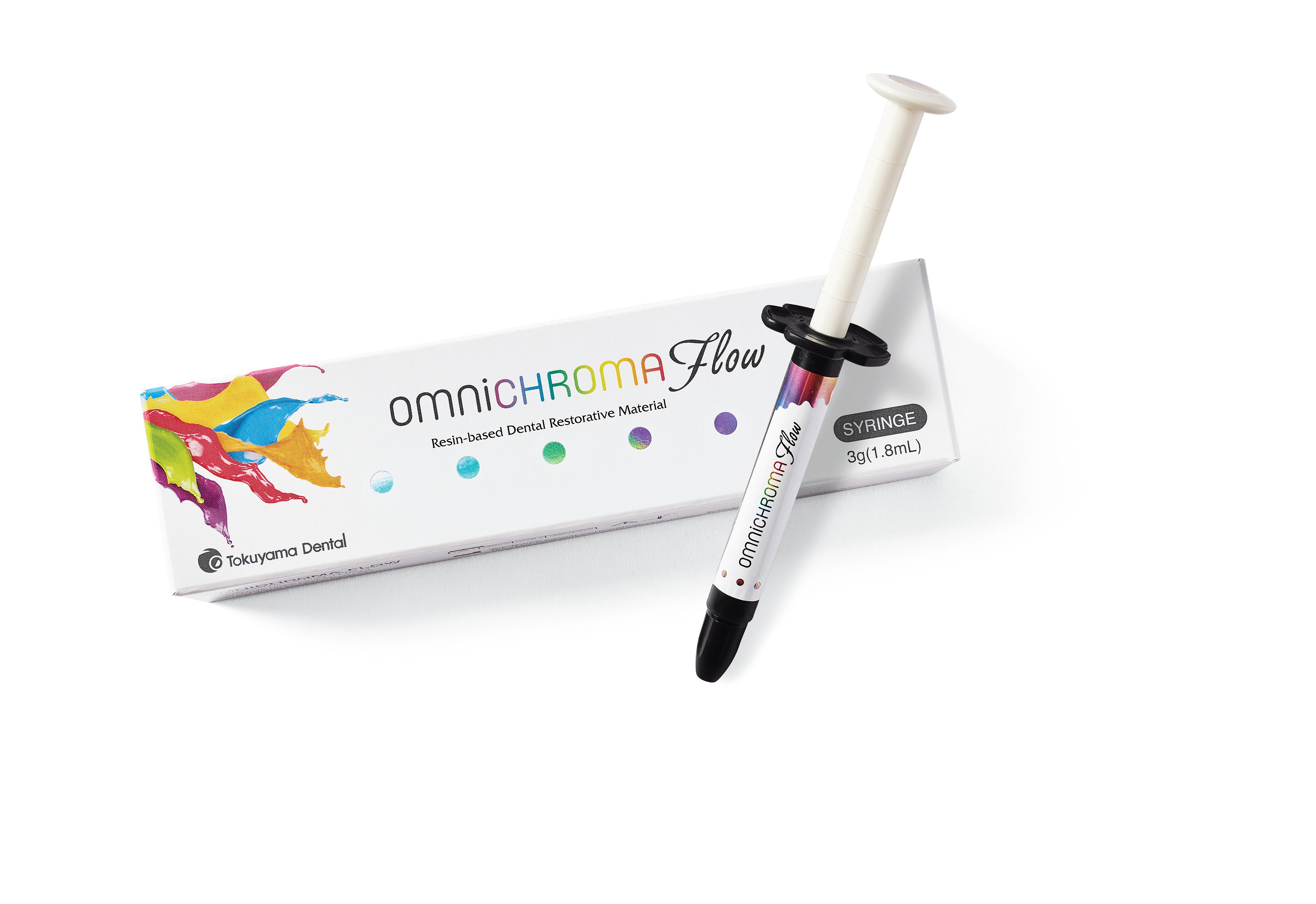5Ws* OMNICHROMA FLOW
Tokuyama Dental America’s new OMNICHROMA FLOW is described as the world’s first single-shade flowable composite.
Compiled by Stan Goff • Information provided by Tokuyama Dental America

What: OMNICHROMA FLOW
Who: Tokuyama Dental America Inc
877-378-3548 | omnichromaflow.com/us
Where: All dental practices looking to perform restorative care that saves time and reduces cost and inventory.
When: Indicated for classes I through V restorations in anterior and posterior teeth. With optimal shade match and esthetics, it is also formulated to deliver excellent mechanical properties. These include flexural and compressive strength, high-wear resistance, and low linear shrinkage, making OMNICHROMA FLOW an ideal choice for great cavity adaptation and long-time performance. Also available is OMNICHROMA BLOCKER FLOW, a supplementary material to aid with shade matching in cases where not enough tooth structure is left or that require masking of stains.
Why: By eliminating the need to shade match or stock multiple shades of composites, it simplifies restorative procedures and allows dentists to reduce their inventory, saving them time and money. Benefits include increased efficiency, reduction of unused composite waste, and simplified composite inventory.
*How: Following in the footsteps of OMNICHROMA, OMNICHROMA FLOW is a 1-shade flowable composite, capable of matching any of the 16 VITA classical tooth shades with a single shade of composite. Using Smart Chromatic Technology and uniformly sized supranano spherical fillers, the material is the world’s first 1-shade flowable composite to esthetically match every color of tooth from A1 to D4 with a single shade of composite. OMNICHROMA FLOW and OMNICHROMA BLOCKER FLOW are available in 3-g/1.8-mL syringes.

ACTIVA BioACTIVE Bulk Flow Marks Pulpdent’s First Major Product Release in 4 Years
December 12th 2024Next-generation bulk-fill dental restorative raises the standard of care for bulk-fill procedures by providing natural remineralization support, while also overcoming current bulk-fill limitations.






























